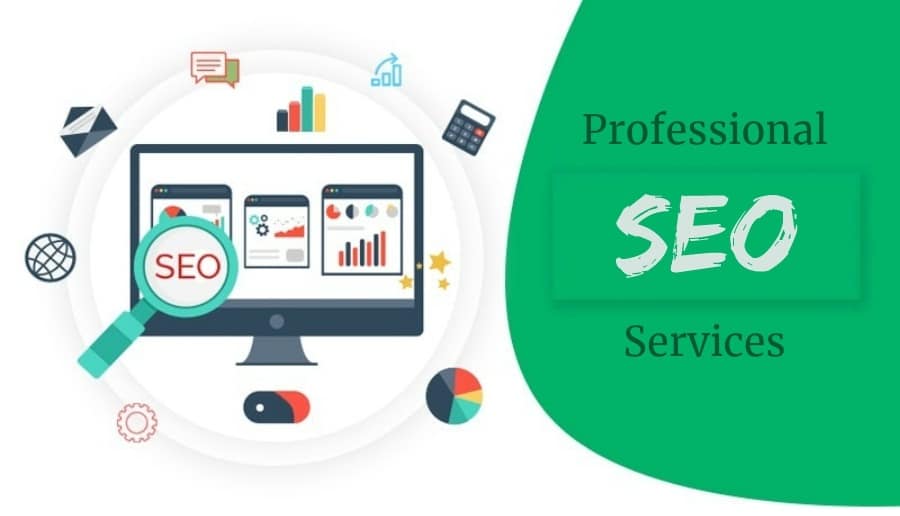In the fast-paced world of business, the terms marketing and selling are often used interchangeably. However, understanding the distinctions between these two crucial functions is essential for any business aiming to achieve sustainable growth and success. This comprehensive guide will explore the differences and similarities between marketing and selling, and how each plays a unique role in driving business success.
Defining Marketing a#nd Selling
Marketing and selling are both vital components of a business strategy, but they operate in distinct ways.
What is Marketing?
Marketing is the process of identifying, anticipating, and satisfying customer needs and wants through the creation, promotion, and distribution of valuable products or services. It encompasses a broad range of activities designed to build brand awareness, attract potential customers, and engage with the target audience. Marketing is a strategic function that focuses on understanding consumer behavior, market trends, and competitive positioning.
Key elements of marketing include:
- Market Research: Understanding the needs and preferences of your target audience.
- Branding: Creating a strong brand identity and image.
- Advertising: Promoting products or services through various channels.
- Public Relations: Managing the company’s reputation and building relationships with stakeholders.
- Digital Marketing: Utilizing online platforms and tools for promotion, including social media, content marketing, and search engine optimization (SEO).
What is Selling?
Selling refers to the direct process of exchanging a product or service for money. It involves persuading and convincing potential customers to make a purchase. Selling is often seen as the final step in the marketing process, where the focus shifts from generating interest to closing the deal.
Key aspects of selling include:
- Sales Techniques: Methods used to persuade customers, such as negotiation, presentations, and demonstrations.
- Sales Process: Steps involved in moving a prospect from interest to purchase.
- Customer Interaction: Direct engagement with potential buyers to address their needs and objections.
- Sales Follow-Up: Maintaining relationships with customers after the sale to ensure satisfaction and encourage repeat business.
The Differences Between Marketing and Selling
While marketing and selling are interconnected, they serve different purposes and require different strategies.
1. Focus and Objective
- Marketing: The primary focus of marketing is on the long-term view of creating a strong brand and market presence. The objective is to build awareness, generate interest, and attract potential customers by addressing their needs and preferences.
- Selling: Selling focuses on the immediate goal of converting leads into customers. The objective is to close sales by persuading potential buyers to purchase a product or service.
2. Approach and Strategy
- Marketing: Marketing involves strategic planning and research to understand the market and consumer behavior. It employs various tools and techniques to create a compelling value proposition and communicate it effectively to the target audience.
- Selling: Selling is more tactical and involves direct interactions with customers. It relies on persuasive techniques and personal selling skills to influence buying decisions and overcome objections.
3. Scope and Duration
- Marketing: Marketing has a broader scope and encompasses a wide range of activities designed to build brand equity and market share. It is an ongoing process that involves continuous adaptation to market changes and consumer trends.
- Selling: Selling has a narrower focus and is concerned with the specific transaction at hand. It is typically a shorter-term activity aimed at achieving immediate sales results.
4. Customer Relationship
- Marketing: Marketing aims to build long-term relationships with customers by providing value and fostering brand loyalty. It involves engaging with customers through various channels and creating positive brand experiences.
- Selling: Selling focuses on the individual transaction and may involve a more transactional approach. However, successful sales efforts often lead to long-term customer relationships and repeat business.
The Overlap Between Marketing and Selling
Despite their differences, marketing and selling are interrelated and often overlap in practice. Successful businesses integrate both functions to create a cohesive strategy that drives growth and maximizes results.
1. Alignment of Goals
Marketing and selling should align their goals to ensure a unified approach. For example, marketing efforts to generate leads should be complemented by effective sales strategies to convert those leads into customers. Clear communication and collaboration between marketing and sales teams are essential for achieving common objectives.
2. Customer-Centric Approach
Both marketing and selling should prioritize the customer’s needs and preferences. Marketing strategies should be designed based on customer insights, while sales efforts should address specific customer pain points and provide tailored solutions. A customer-centric approach enhances the overall effectiveness of both functions.
3. Use of Technology
Technology plays a significant role in both marketing and selling. Marketing automation tools, CRM systems, and data analytics can streamline processes, improve targeting, and enhance customer interactions. Integrating technology into both functions can lead to more efficient operations and better results.
Evolving Trends in Marketing and Selling
The lines between marketing and selling are increasingly blurred as businesses adapt to changing market dynamics and consumer behavior. Here are some key trends shaping the future of marketing and selling:
1. Digital Transformation
The rise of digital channels and tools has revolutionized both marketing and selling. Digital marketing strategies, such as SEO, content marketing, and social media, are now integral to attracting and engaging customers. Similarly, digital sales platforms, such as e-commerce and CRM systems, have transformed the selling process.
2. Data-Driven Decision Making
Data-driven insights are becoming crucial for both marketing and selling. Marketing teams use data to understand consumer behavior, track campaign performance, and optimize strategies. Sales teams leverage data to identify high-potential leads, forecast sales, and personalize interactions.
3. Personalization and Customer Experience
Personalization is a growing trend in both marketing and selling. Tailoring messages, offers, and experiences to individual customer preferences can enhance engagement and drive conversions. Providing exceptional customer experiences throughout the marketing and sales journey is essential for building brand loyalty and satisfaction.
4. Integration of Marketing and Sales Efforts
Successful businesses are increasingly integrating marketing and sales efforts to create a seamless customer journey. This integration involves aligning strategies, sharing data, and collaborating on campaigns to ensure a consistent and effective approach to attracting and converting customers.
While marketing and selling have distinct roles and functions, they are interrelated and work together to achieve business success. Marketing focuses on building brand awareness, generating leads, and creating value, while selling is concerned with converting leads into customers and closing sales. Understanding the differences and similarities between these functions, and integrating them effectively, is crucial for any business aiming to thrive in a competitive marketplace.
By leveraging both marketing and selling strategies, businesses can create a comprehensive approach that drives growth, enhances customer relationships, and achieves long-term success. Embracing the evolving trends and technologies in both areas will enable businesses to stay ahead of the curve and achieve their goals in an ever-changing landscape.
FAQs
1. What is the primary difference between marketing and selling?
Marketing is a broad function aimed at understanding and meeting customer needs through strategies such as market research, branding, and advertising. It focuses on long-term objectives like building brand awareness, generating leads, and engaging with potential customers. On the other hand, selling is a more direct and immediate process that involves persuading and convincing customers to make a purchase. It typically involves personal interactions, negotiations, and closing deals. While marketing is about creating interest and demand, selling focuses on converting that interest into actual sales.
2. How do marketing and selling work together to drive business success?
Marketing and selling are interdependent functions that work together to achieve business goals. Marketing generates awareness and interest by understanding consumer behavior and creating effective campaigns. It brings potential leads into the sales pipeline. Selling, then, takes these leads and focuses on closing sales through direct interactions and persuasive techniques. By aligning marketing strategies with sales efforts, businesses can create a cohesive approach that maximizes lead conversion and enhances customer experience, ultimately driving growth and success.
3. Can marketing and selling be considered the same thing in modern business practices?
While marketing and selling are closely related, they are not the same thing. Modern business practices often blur the lines between the two, but their core functions remain distinct. Marketing encompasses a wide range of activities aimed at building brand presence and generating leads, while selling focuses specifically on closing transactions and converting leads into customers. In contemporary practices, marketing often supports sales efforts through lead generation and nurturing, but the strategic and tactical roles of each function differ.
4. What are the key elements of a successful marketing strategy compared to a sales strategy?
A successful marketing strategy includes market research to understand customer needs, branding to create a strong identity, advertising to promote products or services, and digital marketing to engage with audiences online. It focuses on building awareness and interest over the long term.
In contrast, a successful sales strategy involves techniques for direct customer engagement, such as personalized pitches, presentations, and negotiations. It includes a structured sales process to move prospects from interest to purchase and follow-up activities to maintain customer relationships. Sales strategies are more immediate and tactical, aimed at closing deals and achieving short-term objectives.
5. How has digital transformation impacted the roles of marketing and selling?
Digital transformation has significantly impacted both marketing and selling by introducing new tools, channels, and data-driven approaches. In marketing, digital channels like social media, search engines, and email have become crucial for reaching and engaging with audiences. Digital marketing strategies include SEO, content marketing, and online advertising.
For selling, digital transformation has brought e-commerce platforms, CRM systems, and sales automation tools that streamline the sales process, enhance customer interactions, and provide valuable data insights. Both functions now leverage technology to improve efficiency, personalize experiences, and drive results.
6. How can businesses align their marketing and sales efforts effectively?
To align marketing and sales efforts effectively, businesses should establish clear communication channels and shared goals between the two functions. This alignment involves:
- Regular Meetings: Schedule frequent meetings between marketing and sales teams to discuss goals, strategies, and performance.
- Data Sharing: Share data and insights between teams to ensure that marketing efforts are targeting the right audience and that sales teams have accurate lead information.
- Integrated Campaigns: Coordinate marketing campaigns with sales initiatives to ensure a consistent message and approach.
- Feedback Loop: Create a feedback loop where sales teams provide input on lead quality and marketing teams adjust strategies based on sales outcomes.
7. What role does customer data play in marketing and selling?
Customer data plays a critical role in both marketing and selling by providing insights that drive decision-making and strategy. In marketing, data helps in:
- Segmentation: Identifying target audiences and personalizing marketing efforts.
- Performance Measurement: Tracking the effectiveness of campaigns and adjusting strategies accordingly.
- Trend Analysis: Understanding consumer behavior and predicting future needs.
In selling, data aids in:
- Lead Scoring: Prioritizing leads based on their potential to convert.
- Personalization: Tailoring sales pitches and offers to individual customer needs.
- Forecasting: Predicting sales trends and setting realistic targets.
8. How do personalization and customer experience influence marketing and selling?
Personalization and customer experience are crucial for both marketing and selling. In marketing, personalization involves tailoring content, offers, and communications to individual preferences, which enhances engagement and increases the likelihood of lead conversion. A positive customer experience in marketing can build brand loyalty and encourage repeat business.
In selling, personalization means customizing sales interactions to address specific customer needs and pain points. A great customer experience during the sales process can lead to higher satisfaction, repeat purchases, and referrals. Both functions benefit from a focus on personalization and experience, as they contribute to stronger customer relationships and better business outcomes.
9. What are some common challenges faced in integrating marketing and sales functions?
Integrating marketing and sales functions can present several challenges, including:
- Communication Gaps: Misalignment in goals and strategies due to lack of communication between teams.
- Data Silos: Separate data systems that hinder effective sharing and collaboration.
- Different Metrics: Variations in metrics and performance indicators that lead to conflicting priorities.
- Resource Allocation: Disagreements on resource distribution and budget priorities.
To overcome these challenges, businesses should foster collaboration, implement integrated tools and systems, and align metrics and goals across both functions.
10. How can businesses measure the effectiveness of their marketing and selling strategies?
Businesses can measure the effectiveness of their marketing and selling strategies through various key performance indicators (KPIs) and metrics:
- Marketing KPIs: Include metrics such as lead generation rates, conversion rates, customer acquisition cost, and return on investment (ROI) for marketing campaigns.
- Sales KPIs: Include metrics such as sales revenue, close rate, average deal size, and sales cycle length.
By regularly analyzing these metrics, businesses can evaluate the success of their strategies, identify areas for improvement, and make data-driven decisions to optimize their marketing and sales efforts.
Get in Touch
Website – https://www.webinfomatrix.com
Mobile - +91 9212306116
Whatsapp – https://call.whatsapp.com/voice/9rqVJyqSNMhpdFkKPZGYKj
Skype – shalabh.mishra
Telegram – shalabhmishra
Email - info@webinfomatrix.com

.jpg)
.jpg)





 English (US) ·
English (US) ·